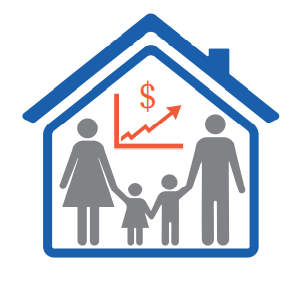Idaho’s economic recovery from the pandemic-induced recession has produced unexpected and often contrasting outcomes. As vaccination rates climb and Idahoans return to – or change – the way they make a living, our state has the opportunity to reverse course and build an economy that works for everyone. Our leaders can make choices that help more Idahoans keep what they earn while making the investments in schools, roads and bridges, and health that will power our long-term economic growth. Here are five key facts about our economic recovery and our current state tax policies that every Idahoan should know.
1. Idahoans’ tax dollars help build strong communities.

Public investments are essential for our communities to thrive. For example, transportation and infrastructure investments allow small businesses to grow, create jobs, and improve opportunities for all of our residents. Together we invest in public schools and universities, health, and cleaner air and water. In Idaho, residents’ tax contributions make up most of the state budget, also known as the General Fund. Over 62 percent of the state budget goes to education.
2. Our tax system asks Idahoans who are earning less to contribute more of their income in
taxes.
A fair tax system is a tax system that is based on one’s ability to pay and one that asks about the same of a wealthy person and a person with a modest income to pay into it. But Idaho’s tax system asks Idahoans who are earning less to spend more of their income (proportionally) on taxes. Tax rate cuts approved during the 2021 legislative session were larger for top earners and smaller for the rest, which keeps the load heaviest on modest-earning families. A legacy of racial discrimination in the labor market and beyond means that – contrary to our goals as a democracy – these disparities are pronounced by race.
3. Many of Idaho’s families are still experiencing recession hardship while costs are climbing.

Idaho’s gas prices for the month of July have risen to $3.79 a gallon and rents have risen sharply (for example, by 30 percent in Boise from May 2020 to May 2021). Home prices are leaving many first-time home buyers and their families out of the market. And in June of this year, about 1 out of 4 Idaho households reported difficulty paying for usual expenses – such as food, rent or mortgage, car payments, or medical expenses. Broad tax cuts, which flow largely to households not experiencing recession hardship, have little impact in ensuring a recovery for everyday Idaho families.
4. The corporate income tax has weakened, despite strong corporate profits.
The vast majority of this year’s $17 million in corporate tax cuts goes to shareholders who live outside of Idaho. However, investments in education, transportation, and other public services and infrastructure are essential to creating a high-quality workforce and economically vibrant communities. Making Idaho a business-friendly state requires a balanced approach that includes robust investments. We can achieve this with equitable tax policies that raise enough revenues to support our growing state.

5. The tax system can be a powerful tool to advance economic growth for every community.
Our tax system can become a powerful tool for advancing our economic future. To better support families in the years ahead, Idaho should create an Idaho Working Families Tax Credit. This credit – worth a few hundred dollars – would reward families for working more and allow them to keep more of what they earn, helping cover rising costs of households needs.
You can download a copy of this report here: Five Key Facts About Idaho’s Economic Recovery


